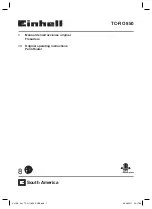
6
EMI
All electromagnetic interference (EMI) sources, from outside or inside of the router and application
system, adversely affect the router in the following ways:
•
A conduction pattern of capacitance coupling.
•
Inductance coupling.
•
Electromagnetic wave radiation.
•
Common impedance (including the grounding system) coupling.
To prevent EMI, use the following guidelines:
•
If AC power is used, use a single-phase three-wire power receptacle with protection earth (PE)
to filter interference from the power grid.
•
Keep the router far away from radio transmitting stations, radar stations, and high-frequency
devices.
•
Use electromagnetic shielding, for example, shielded interface cables, when necessary.
Lightning protection
To protect the router from lightning, perform the following tasks:
•
Make sure the grounding cable of the chassis is reliably grounded. For how to connect the
grounding cable, see "
•
Make sure the grounding terminal of the AC power receptacle is reliably grounded.
•
Install a lightning arrester at the input end of the power supply to enhance the lightning
protection capability of the power supply.
•
Install a special lightning arrester at the input end of outdoor signal lines (for example, E1 line)
to which interface modules of the router are connected to enhance the lightning protection
capability.
For how to install lightning protectors and surge protector, see "
Installing a lightning protector for a
," "
Connecting the AC power supply to a power strip with lightning protection
,"
Space
For easy installation and maintenance, follow these space requirements:
•
Reserve a minimum of 1 m (3.28 ft) of clearance between the rack and walls or other devices.
•
For heat dissipation, make sure the headroom in the equipment room is not less than 3 m (9.84
ft).
•
Make sure the rack has enough space to accommodate the router. See
for rack
requirements. For more information about chassis dimensions, see "Appendix A Chassis views
and technical specifications."













































